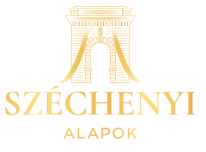
An important indicator of an economy’s competitiveness is how the number, age distribution and value added of different sized companies change. In this entry, we take a look at how these factors translate in the Hungarian ecosystem, with a special emphasis on the value provided by infocommunication, scientific and technical activities.
The weight of small businesses
Small companies deserve attention: they deliver dynamism, change and innovation to the economy, which is particularly important in the face of increasing environmental uncertainty, as it improves the resilience of the economy. It is a good sign for economic dynamism if there are many young startups active in the economy.
According to Magdolna Csath’s publication and the statistics of Eurostat between 2010 and 2016, the number of companies in the infocommunication and in the scientific, engineering and technological fields witnessed the highest growth amongst the medium-sized companies employing between 50 and 249 people.
It appears that the shift of the Hungarian economic structure towards these high value-added service sectors is relatively slow and medium-sized companies are slowly taking the lead. This is most likely related to the strengthening of the role of larger foreign service centers. On one hand, these companies are indeed characterized by higher value added, but on the other hand, they ensure moderate contribution to the growth of national wealth, as they could also be characterized by profit repatriation.
What does value added mean?
In economics, value added means a higher portion of revenue for integrated companies, e.g., manufacturing companies, and a lower portion of revenue for less integrated companies, e.g., retail companies. Total value added is very closely approximated by compensation of employees plus earnings before taxes. The change in the rate of value added highlights the growth of national wealth. National wealth is different from GDP, since GDP includes proprietary profits, while national wealth only includes value added on a local basis. It is therefore important to ensure that nationally owned companies are able and willing to generate value.
In the case of Hungary, it is worth noting that the micro and small businesses (with employees between 0-9 and 10-19) are the ones most likely to create new value added as they operate in innovative sectors, not the medium-sized companies with 50-249 employees. Therefore, it would be reasonable to pay more attention to these smaller companies.
[post_newsletter title=”Iratkozzon fel hírlevelünkre!”][/post_newsletter]
The age of companies
Just as it is important to have lots of young people in society, so is relevant in the case of companies: they are expected to dynamize the economy and bring new ideas to the market.
In most cases, younger companies are startups with a few employees. In IT, the share of one-year old firms in Hungary is nearly 10 percent, while in science, it is over 8 percent. In terms of number of employees, the rate of one-year old companies in Hungary among companies with less than 5 employees in the field of infocommunication, and science, engineering and technology is 11.3 and 9.3 percent.
All in all, the role of micro-companies in the economic structure is smaller in Hungary than in other V4 countries. This however, has a weakening effect on the innovation capacity an economy with the potential to slow down the structural changes, which are required in an uncertain environment. All of this is noteworthy because, as highlighted, smaller companies can also play an important role in creating higher added value and expanding national wealth.
In addition, these companies generally create and maintain good jobs, where there is a demand for knowledge and skills. In the long run, the sustainability of economic growth and the improvement of its underlying competitiveness depend on the strengthening of innovation and the growth of high-value-added firms, activities and jobs.
